Immersive art in the historic Mãe d’Água Reservoir
Visiting the Immersivus Gallery in Lisbon.
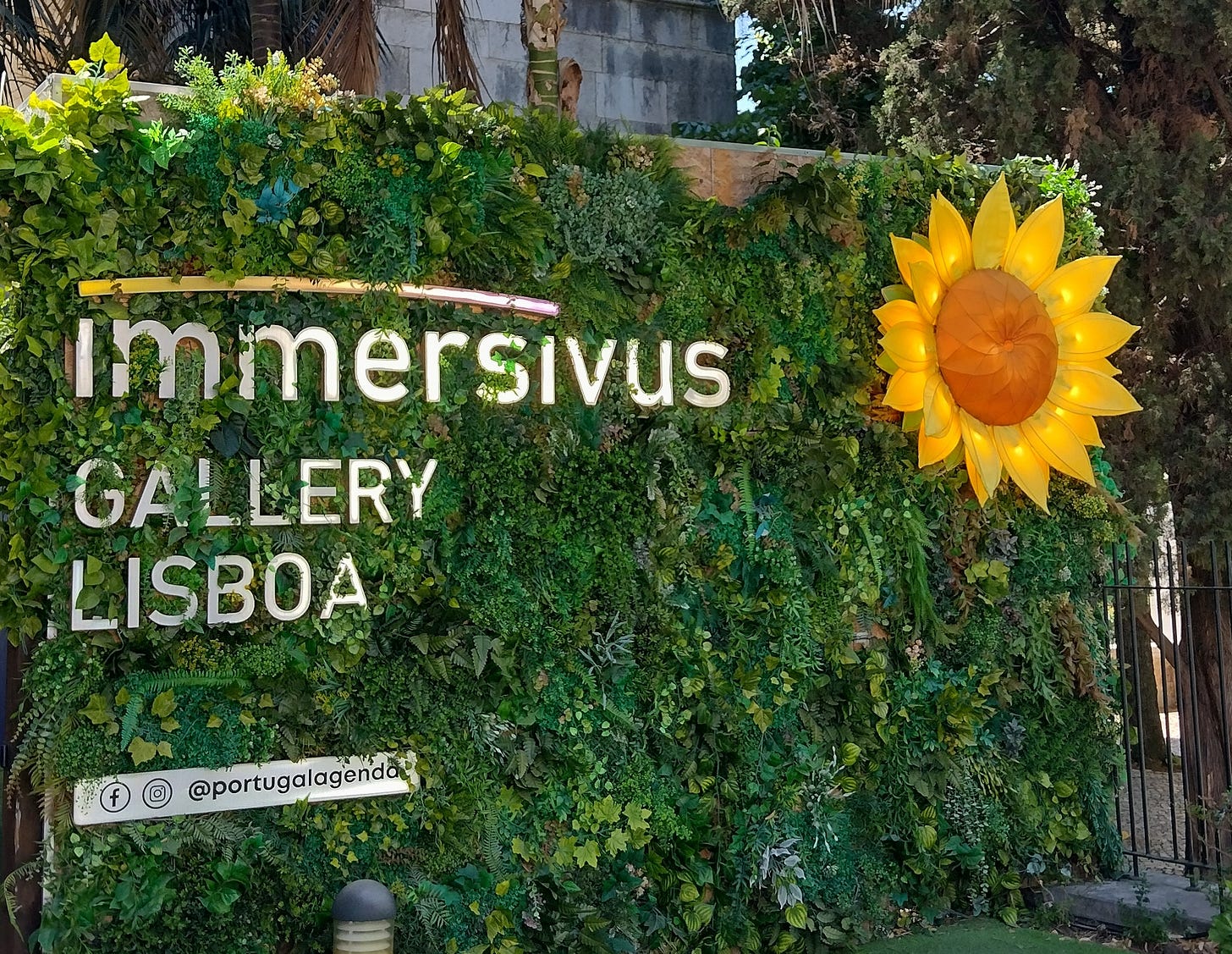
Dear Readers,
Hidden in plain sight in Lisbon’s Jardim das Amoreiras (Garden of Amoreiras), the Mãe d’Água das Amoreiras (Mother of Water) Reservoir blends centuries-old engineering with innovative digital art. Once the grand terminus of the Águas Livres Aqueduct, an 18th-century marvel that carried water from Sintra to Lisbon, it now hosts immersive exhibitions that transform its vaulted stone interior into a living canvas.
The Aqueduct.
The Águas Livres Aqueduct is a striking example of baroque engineering, commissioned by King Dom João V and built between 1731 and 1799. This monumental hydraulic structure spans more than 36 miles, crafted from locally quarried cut stone and limestone masonry.
Recognized as the last great classical aqueduct constructed anywhere in the world, it was designed to capture and transport water across five municipalities in Portugal - Amadora, Lisbon, Odivelas, Oeiras, and Sintra. Beginning in the rural landscapes of Sintra, the aqueduct winds its way toward the city, crossing urban neighborhoods, streets, and public spaces. In Amadora, it runs parallel to the railway line linking Sintra to Lisbon, blending centuries-old infrastructure with the rhythms of modern life. If you’ve ever driven toward Lisbon’s iconic red Ponte 25 de Abril bridge, you may have noticed the sweeping stone arches of the Águas Livres Aqueduct along the way.
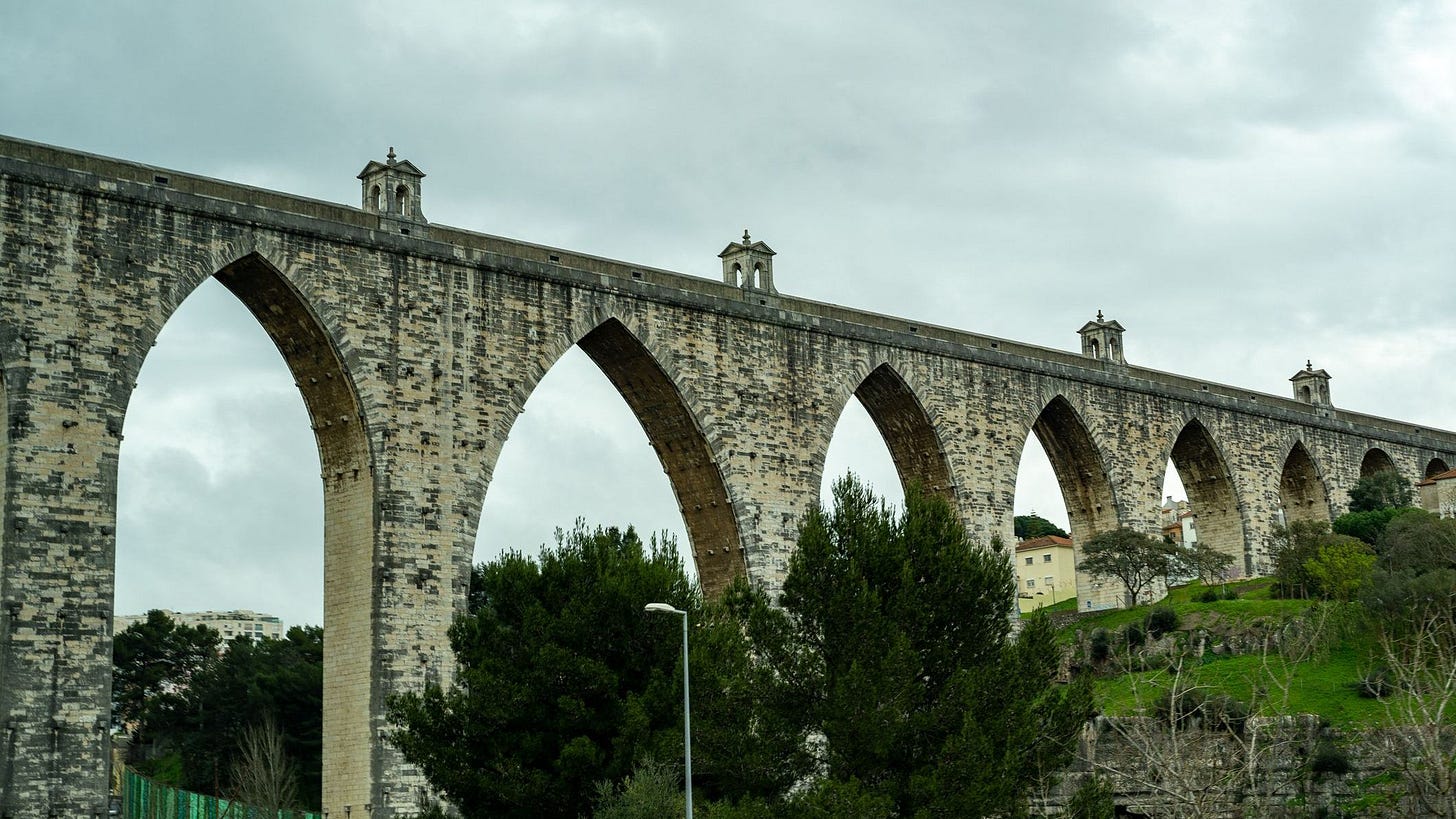
A vast water tank.
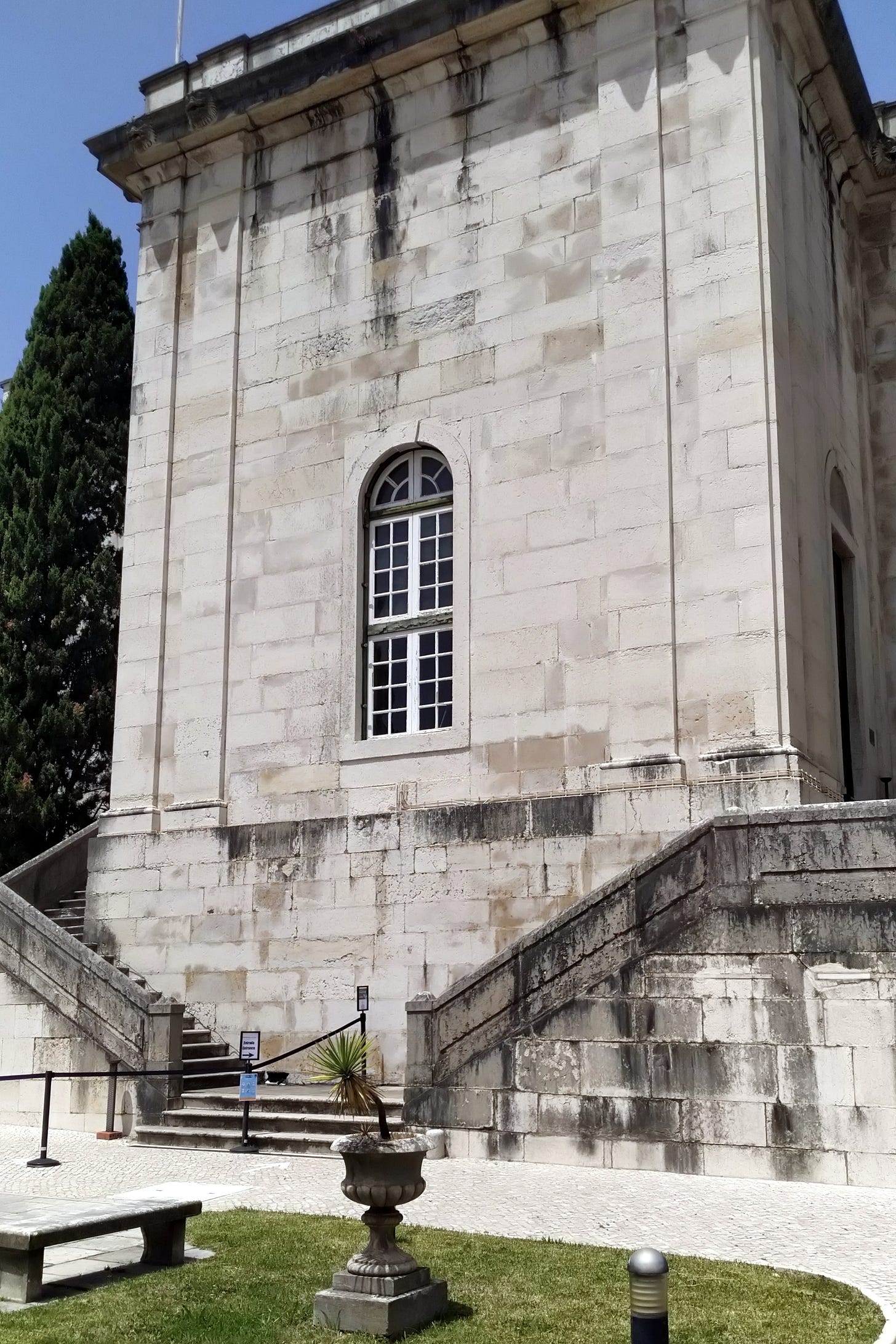
From the outside, Mãe d’Água appears to be a modest stone building, but inside you’ll find soaring vaulted ceilings, sturdy stone columns, and a vast water tank 7.5 meters deep, with a capacity of 5,500 cubic meters and topped by a waterfall spilling from a carved dolphin’s head. The cavernous space feels serene and refreshingly cool.
Classified as a national monument since 1910, Mãe d’Água sits beside the Amoreiras Gardens, a peaceful spot marking the aqueduct’s endpoint.
A New Life as Immersivus Gallery.
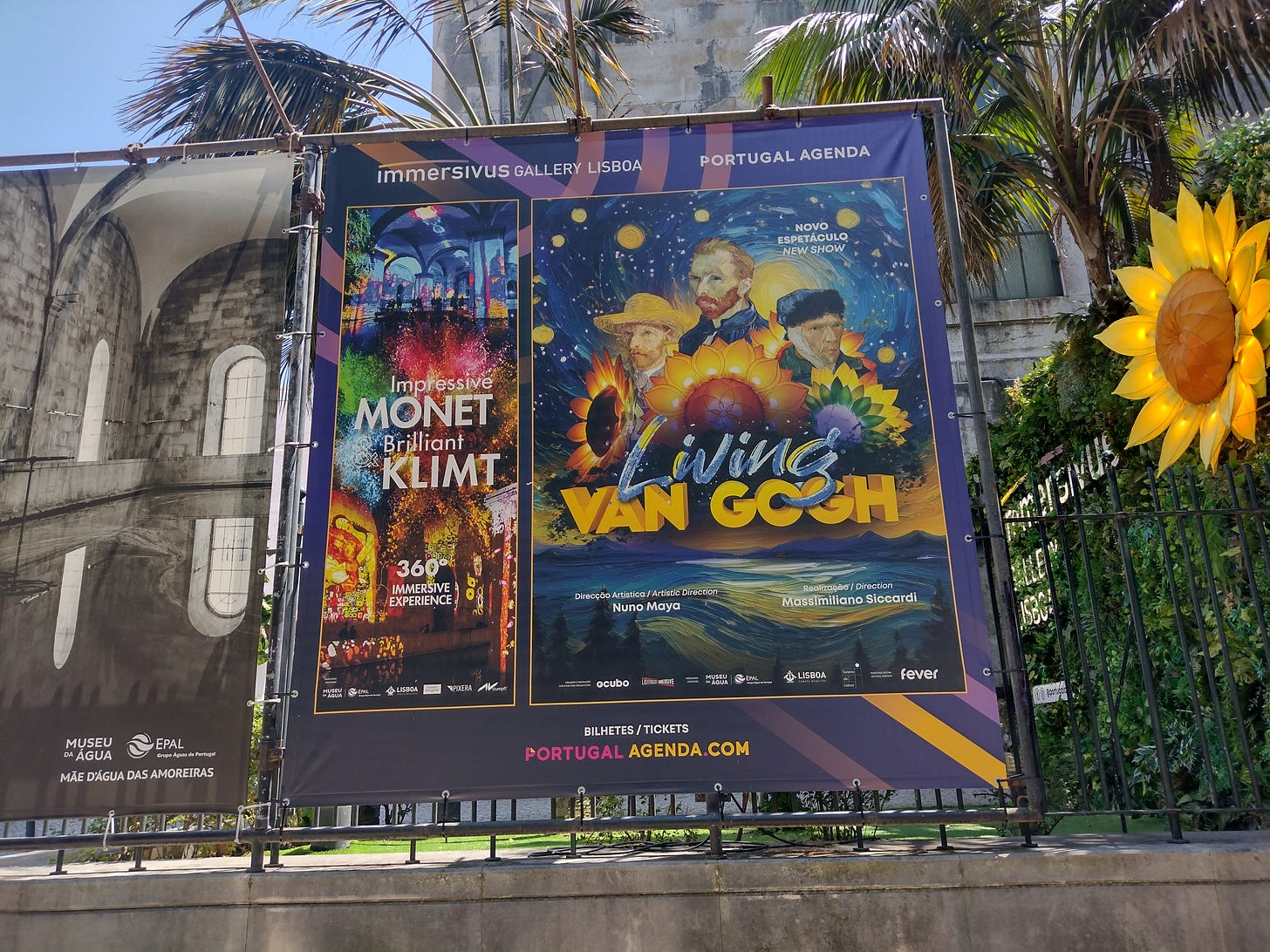
Today, this structure is the home to Immersivus Gallery Lisboa, where projected art, music, and sound create immersive exhibitions from Monet and Klimt and Van Gogh, to Ancient Egypt.
Using state-of-the-art technology, the gallery transforms the walls of the reservoir with stunning light projections, surrounding guests in a captivating and visually striking atmosphere.
At the time of our visit to the Immersivus Gallery, the Impressive Monet and Brilliant Klimt was on exhibit.
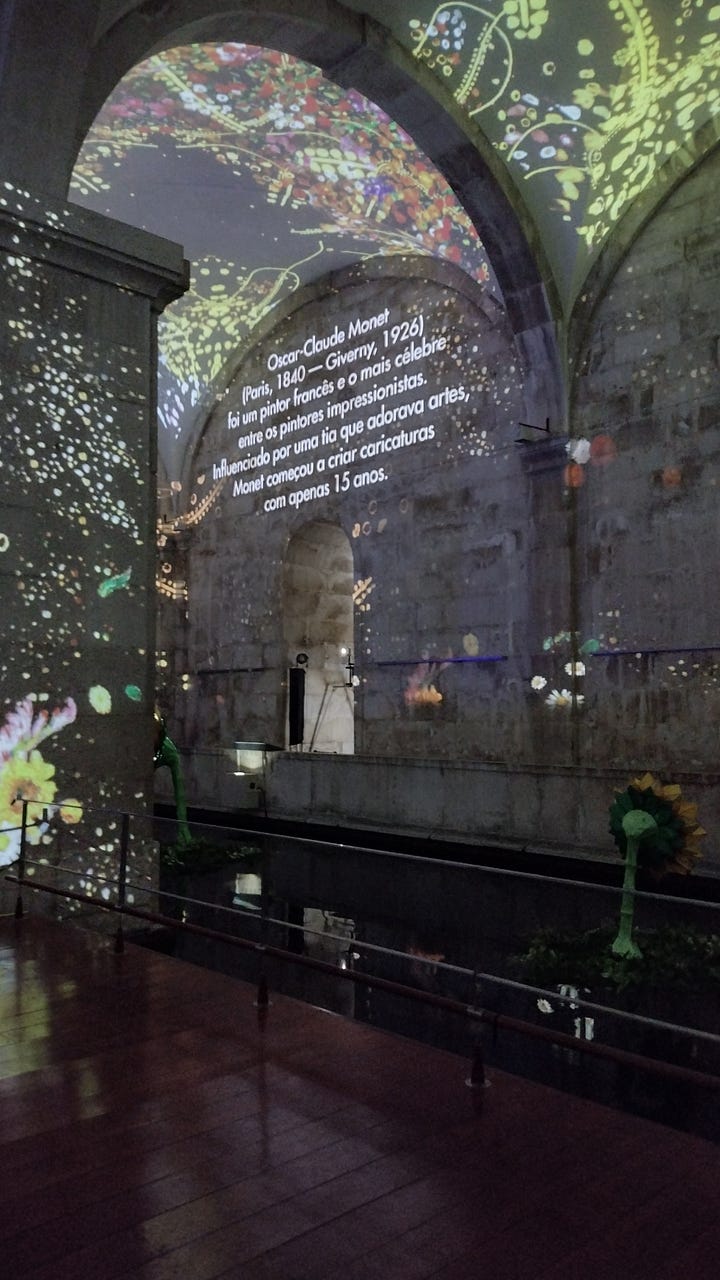
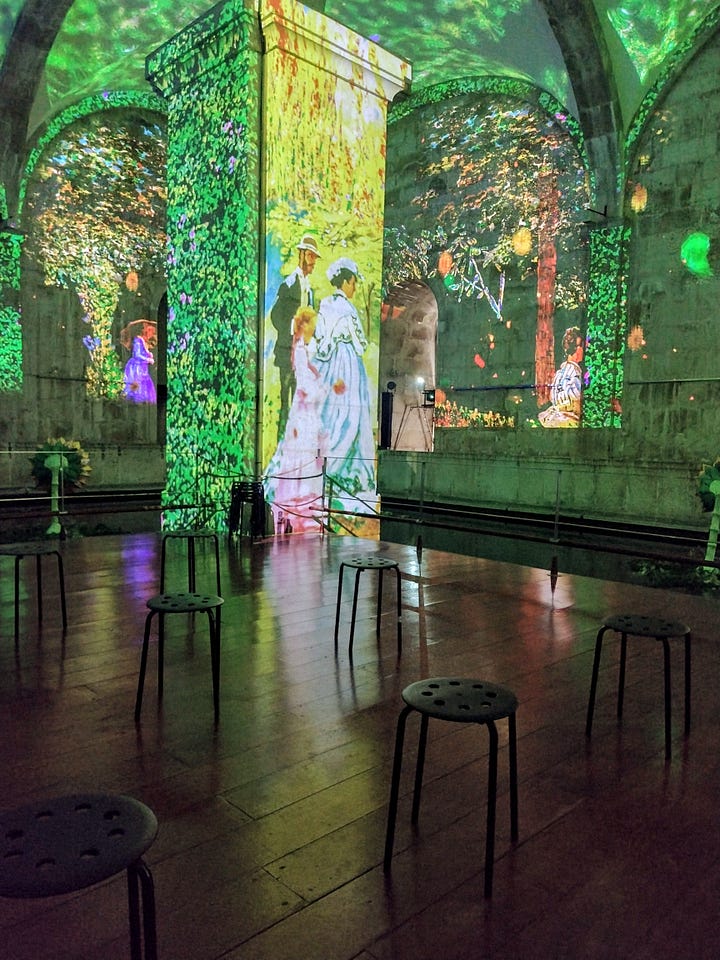
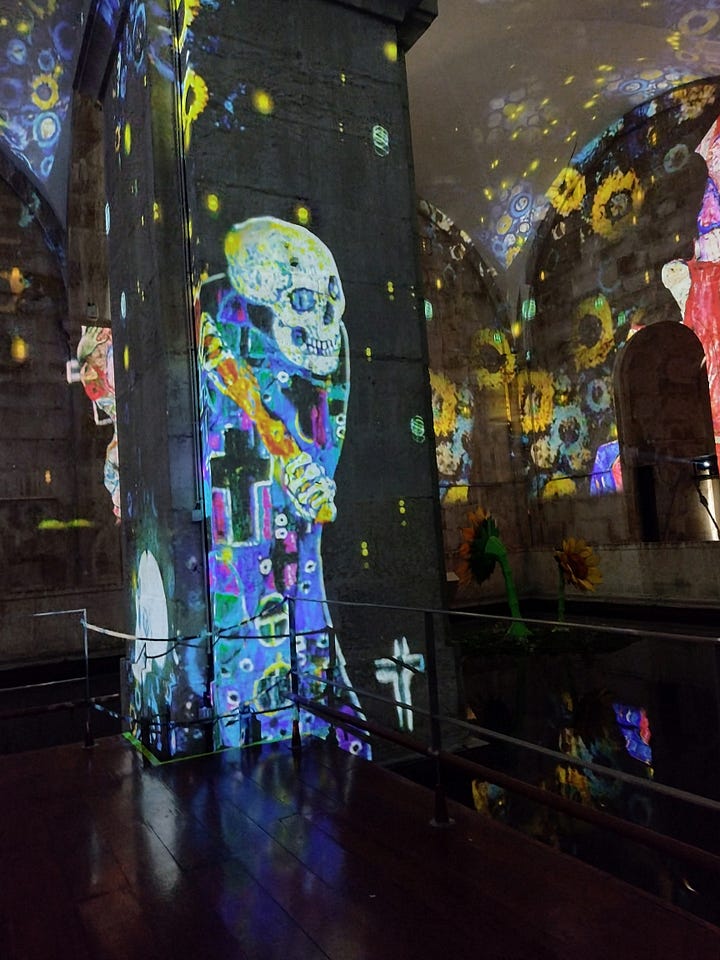
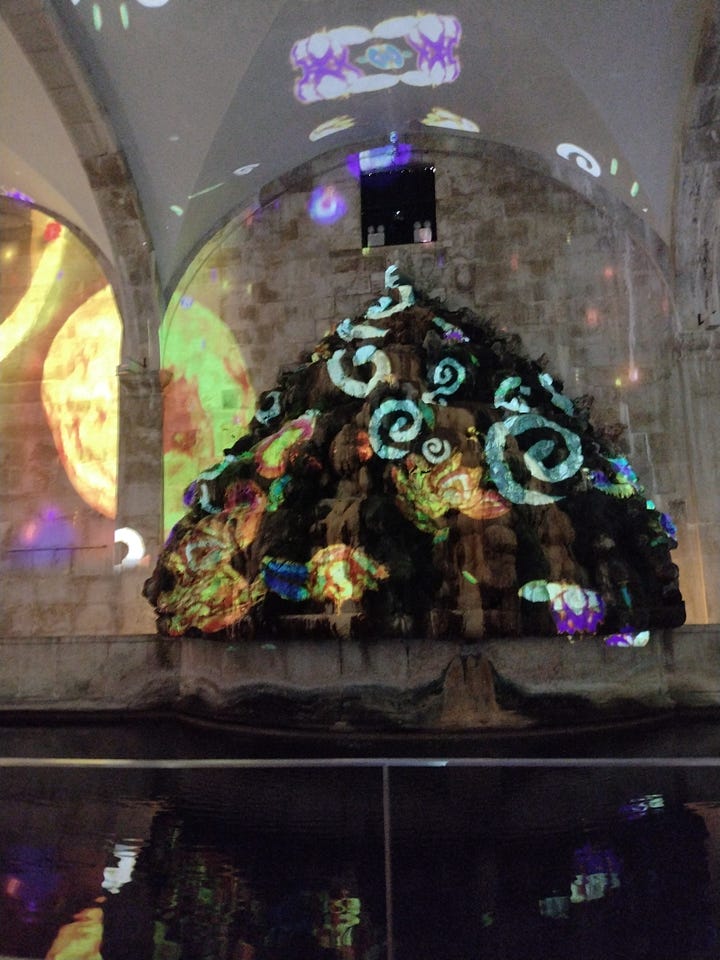
Through orchestrated visuals and music, the exhibition invites visitors to step into the painting, feeling the brushstrokes and atmosphere come alive around them. These two videos show parts of the exhibit we attended.
If you want a premium view of the exhibit (as we decided to do), adults can purchase tickets (15€ each) to sit on stools on a wood floating platform (it’s a stationary platform, but there is subtle movement). Children are not allowed on the platform. Otherwise, you can stand along the perimeter of the exhibit with a good view of the show.
During our visit in the middle of the summer (there are no fans or air conditioning), it was cooler to stand along the perimeter than to sit on the floating platform where the humidity was evident.
According to the venue website, the Monet and Klimt exhibit will end on August 31, 2025. However, plans are for this space to host a variety of immersive experiences, featuring diverse themes and both national and international artists, so check the Immersivus Gallery website for more information on new, upcoming exhibits.
By blending technology with art, it offers visitors a unique opportunity to explore culture in a fresh and innovative way.
Our impression of the exhibit.
It was okay for something different to do and if you’re short on time since the show is only 30 minutes long, but we thought the price for sitting on the floating platform on little stools was high for what it was.
When we entered the reservoir, it was dark, so it made it difficult for us to see and appreciate the architecture of the structure and the magnificence of the dolphin head waterfall. It would have been nice to walk into a lighted space first before the show began.
Although there were words in Portuguese posted on the walls regarding the artists, we would have liked to have seen more information about the artists prior to the show - perhaps a short narrative in both Portuguese and English (since this exhibit attracts tourists), explaining the style of each artist and for what they were noted and what works by the artists the exhibit would be showing.
The images repeated. Some were a bit fuzzy. But it was pretty to see all the colors while listening to the water pour out of the dolphin head waterfall.
Tour of the Water Museum.
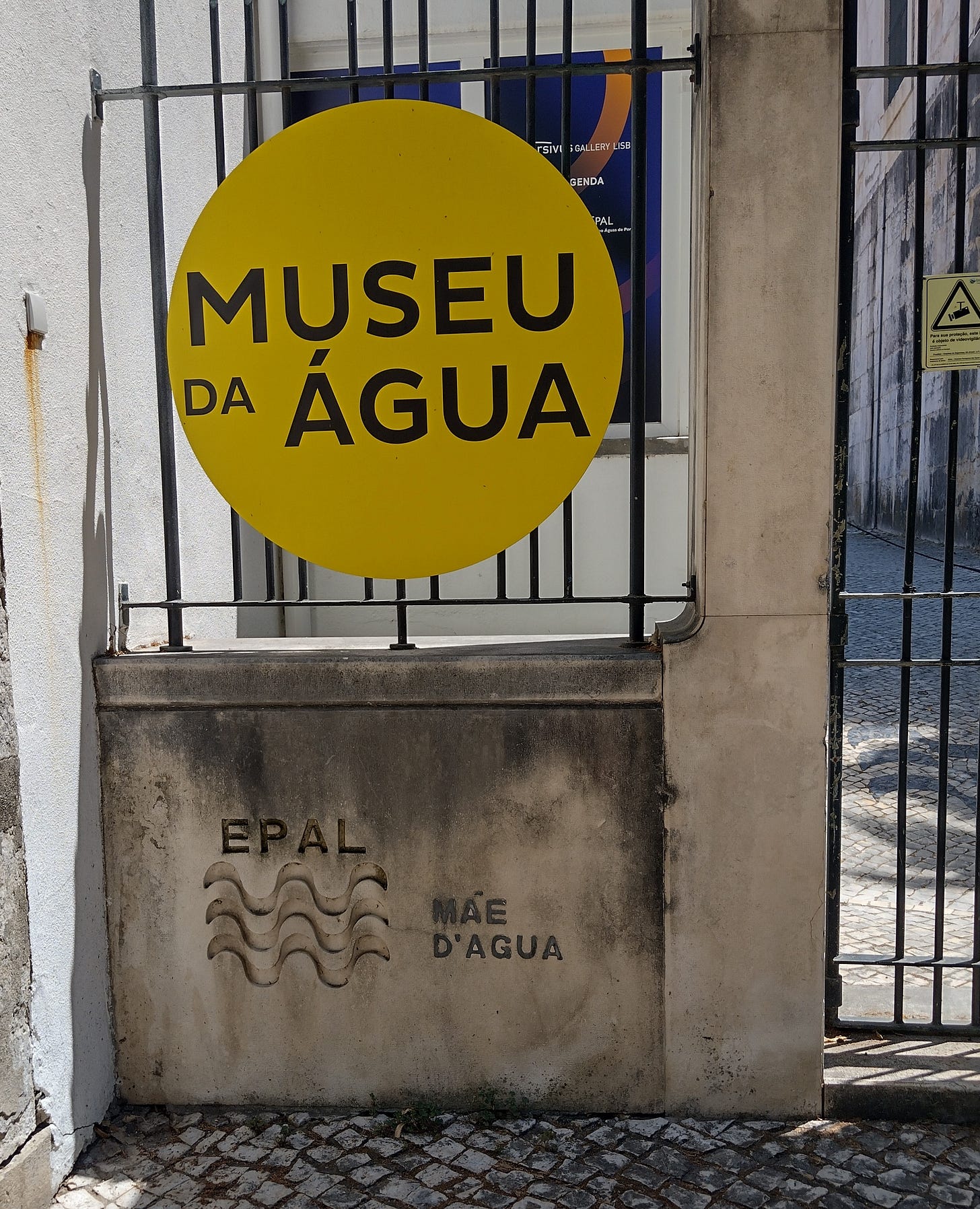
In addition to the immersive exhibits, cultural visits and guided tours of the Water Museum are available with reservations made in advance. Learn more here.
If you visit:
Immersivus Gallery website.
There are two Immersivus Galleries – one in Lisbon at the Mãe d’Água Reservoir and one in Porto in different locations.
Tickets and more information can be found on the Portugal Agenda website. There are a few pricing options depending on age, mobility, and if you are a resident of Lisbon or Porto. For Lisbon, a 15% discount is offered if you have a Lisboa Card.
Duration: Around 30 minutes, with sessions running Tuesday to Sunday (usually around 14:30 (2:30 pm).
Public restrooms for the Lisbon venue are in a separate building after you enter the gates to the Water Museum. The gates are not open until a few minutes before the exhibit starts.
Reduced Mobility: Although the Lisbon venue offers discounts on tickets for people with reduced mobility, we did not see a ramp or an elevator, but that does not mean they weren’t there (it was after all, dark inside). I suggest first contacting the venue directly to be sure they can accommodate your specific needs.
Not recommended for people with epilepsy or sensitivities to light as the show involves a great deal of flashing lights.
Young children should be kept close as there is (obviously) water…
A snack bar kiosk is located outside the gates of the Water Museum in the Jardim das Amoreiras in Lisbon. There are also restaurants within walking distance.
Thanks for being on this journey with me!
Thank you for reading Our Portugal Journey. My newsletter is a reader-supported publication. To receive new posts and support my work, consider becoming a free or paid subscriber to help keep this publication independent.
You can also buy me a coffee or a glass of wine, anytime right here.
Also thank you to Richard G. for supporting my work through Buy Me a Coffee.
I truly appreciate it!
Coming up Next on Our Portugal Journey…
Lisbon Classical Nights: An Intimate Classical Guitar Concert in a Historic Church Available on August 28th.
Until next time…
Obrigada!
Carol.


I tried to go to that immersive exhibit here, apparel get motion sickness even from that 🤣🫠🤯 It took all of 5 minutes before I had to walk out. Which stinks, we get a few a year here.
The Water Museum, another place on our list of to-do's, but we just haven't gotten around to yet. Thanks for the reminder!